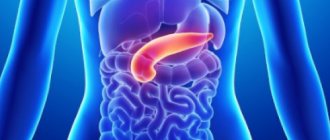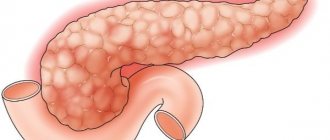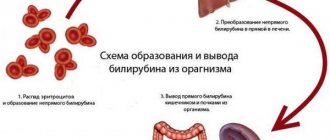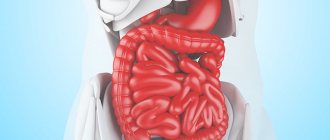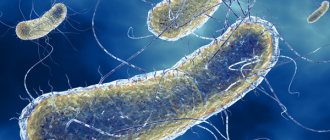Date of publication: 04/01/2016
until March 31
You get 10% cashback when purchasing a gift certificate More details All promotions
Pancreatitis
- a disease that affects not only adults, but also children.
Pancreatitis in a child
Pancreatitis is inflammation of the pancreas. The pancreas produces digestive enzymes. If for some reason these enzymes do not enter the esophagus, but remain in the gland, digestion of the mucous and glandular tissue begins, which causes pain and leads to destruction of the gland.
More information about pancreatitis
The child’s body responds more sensitively to any changes, and the processes in it proceed more actively. Therefore, almost any allergic or infectious disease in childhood affects the pancreas.
At the same time, acute pancreatitis is rare in children, since many factors contributing to its development are absent. In children, reactive and chronic forms of the disease are more common.
Pancreatitis in early childhood
Diagnosis and treatment of pancreatitis in children
Pancreatitis can be diagnosed even in infants. As a rule, the cause of the disease at this age is congenital enzyme deficiency or malformations of the digestive system. Pancreatitis can also be a manifestation of mumps (“mumps”). In some cases, the cause of pancreatitis in young children is nutritional imbalances, injuries, or medications.
A small child is not able to complain where it hurts. With pancreatitis, the baby cries hysterically and quickly loses weight. His tummy is swollen. With such symptoms, the child should be shown to a doctor as soon as possible in order to establish a diagnosis and begin treatment.
Diagnostics
To make a diagnosis, it is not enough just to collect the patient’s complaints. The presence of reactive changes in the pancreas can only be determined using ultrasound data. In this case, the specialist must examine not only this organ, but also the surrounding ones. This is necessary to determine the cause of the disease, as well as the degree of damage to the gastrointestinal tract as a whole.
The parenchyma of a healthy gland, according to ultrasound diagnostics, is homogeneous. The size of the organ is neither increased nor decreased. There should also be no focal or diffuse changes in the tissue and other echo signs of the disease.
The echo pattern of diffuse changes may be different. It can suggest the presence of one or another disease:
Pancreatic tumor markers
- a decrease in the echogenicity of pancreatic tissue, an increase in the size of the organ may indicate an attack of acute pancreatitis;
- the opposite picture, when the density increases and the size of the gland decreases, indicates fibrosis of the organ;
- changes in a reactive nature can be indicated by a diffuse decrease in echogenicity while maintaining the normal size of the gland;
- An increase in organ density and size within normal limits indicate the occurrence of lipomatosis, a condition in which partial replacement of the gland parenchyma with adipose tissue occurs.
To clarify the diagnosis of reactive changes in the pancreas, it is also necessary to conduct additional instrumental and laboratory studies. They allow you to assess the condition of other organs of the gastric tract and the condition of the body as a whole. To do this, carry out:
- endoscopy of the duodenum - much attention is paid to the area where the excretory duct of the pancreas flows into;
- general blood test and biochemistry - these studies are performed in order to identify functional disorders of the gland and the presence of inflammatory processes in the body;
- urine test for amylase - this enzyme is produced by the pancreas; an increase in its content in the urine indicates a significant dysfunction of the organ.
After all laboratory and instrumental research methods have been carried out, the gastroenterologist makes a diagnosis based on test results and the presence of echo signs of the disease.
Chronic pancreatitis in children
As a child grows up, he or she may develop bad eating habits. Addiction to sweets and carbonated drinks contribute to the development of chronic pancreatitis. An uneven diet, which, unfortunately, is typical for most schoolchildren, also has an effect. Among the causes of chronic pancreatitis in children are also intestinal parasites (worms), poisoning, trauma and infectious diseases.
Chronic pancreatitis is detected only at the time of exacerbation; between exacerbations there are no manifestations of the disease. An exacerbation can be triggered by the intake of junk food, medications (especially when self-medicating), or illness.
Symptoms of chronic pancreatitis during exacerbation:
- pain. In young children, the pain spreads throughout the abdomen or is concentrated near the navel. In older children, the pain is concentrated in the upper abdomen and can radiate to the back;
- nausea and vomiting (more common in older children);
- decreased appetite;
- stool disorders (diarrhea and constipation may alternate);
- general poor health, tearfulness, fatigue, drowsiness.
Symptoms of the disease
Reactive pancreatitis in a child
Due to its specificity, reactive pancreatitis can occur only in an acute form. Its complications, of course, can become chronic pathologies of the pancreas, but reactive pancreatitis itself does not.
The first manifestations of the disease are completely identical to those that occur in adults with the development of any inflammation of the pancreas. In most cases, the child complains of:
- increased attacks of diarrhea, followed by causeless constipation;
- stomach ache;
- dry mouth;
- extreme thirst;
- loss of appetite;
- general malaise.
As the disease progresses, the described symptoms are complemented by the baby’s apathy, increased lethargy and loss of interest in everything that is happening. In especially severe cases, fever, nausea, vomiting, headaches and even loss of consciousness should not be ruled out.
Naturally, the stronger and more vivid the symptoms appear, the sooner it is necessary to take appropriate measures to treat the disease. Otherwise, the appearance of complications of reactive pancreatitis, represented by severe and often chronic ailments of the pancreas, cannot be avoided.
The following video will introduce you to the symptoms of pancreatitis in children:
Reactive pancreatitis
Reactive pancreatitis is caused by spasms of the pancreatic ducts, as a result of which enzymes cannot enter the gastrointestinal tract and accumulate in the gland, beginning to “digest” it. The child begins to experience pain, which usually manifests itself sharply and sharply, is clearly localized above the navel and is girdling in nature. Nausea and vomiting of undigested stomach contents are possible. The attack of pain can last up to several hours.
An attack of reactive pancreatitis can be caused by:
- inflammatory processes in the child’s body (with acute respiratory viral infections, influenza, sore throat, diseases of the gastrointestinal tract);
- excessive consumption of food that the child’s body is not able to cope with. First of all, these are fried foods, dry foods (chips, crackers with seasonings), carbonated drinks;
- food with a large number of preservatives, flavor enhancers and other food additives;
- change of diet (for example, when a child enters school or kindergarten). This is how the body reacts to unusual food;
- taking certain medications (antibiotics or antiviral drugs).
Causes
The pancreas is not only involved in the digestion process, but also produces hormones. Enzymes produced by the organ are part of pancreatic juice. When eating food, this liquid is released into the duodenum, where it binds to polysaccharide molecules and breaks them down.
The excretory duct of the gland is directly connected to the intestinal cavity. Therefore, inflammatory processes that occur in other parts of the digestive tract can spread to the pancreas. This is how reactive pancreatitis occurs. This pathological condition is characterized by swelling, inflammation, and dysfunction of the organ.
In most cases, this type of pancreatitis occurs in a chronic form and is not characterized by a clear clinical picture. Acute reactive inflammation usually occurs in the presence of congenital gastrointestinal pathology.
To diagnose reactive changes, it is necessary to perform an ultrasound
The most common causes of the development of reactive phenomena in the pancreas:
- taking antibacterial agents longer than recommended;
- abdominal injuries;
- eating disorders;
- abnormalities of the pancreas;
- inflammatory and other gastrointestinal diseases;
- infections;
- stress, prolonged significant psycho-emotional stress.
Disturbances in the structure of the parenchyma of a diffuse nature can also be a consequence of excess body weight, diabetes mellitus of the first or second type. Often, pathological changes occur in older people without the diseases listed above.
It is believed that alcohol abuse and large amounts of fatty foods in the diet play the greatest role in the development of reactive disorders. Inflammatory pathologies of the gallbladder and liver can also provoke the onset of the disease. This leads to pain and increased blood glucose levels.
Treatment of pancreatitis in children
Treatment of pancreatitis in children
Treatment of pancreatitis in children includes:
- diet therapy. It is necessary to reduce the food load on the pancreas; it may be necessary to abstain from food for some time, giving only drink. In any case, food should be gentle - steamed, stewed or boiled;
- pain relief (taking antispasmodics);
- drug therapy to reduce the activity of the pancreas and the production of gastric juice, as well as taking medications that include pancreatic enzymes.
Pediatric gastroenterologists at Family Doctor have extensive experience in diagnosing and treating pancreatitis in children of all ages.
Make an appointment Do not self-medicate. Contact our specialists who will correctly diagnose and prescribe treatment.
Symptoms
Reactive changes in the pancreas in a child or adult patient manifest themselves with symptoms:
- acute pain in the abdominal area, often above the navel;
- indigestion - diarrhea, flatulence, nausea and vomiting;
- dryness of the oral mucosa, white coating on the tongue;
- fever - usually this symptom appears only in the first hours of illness;
- general malaise, lethargy, irritability.
A characteristic feature of the pain syndrome is that the discomfort decreases or may disappear when the patient is in a sitting position with the torso bent forward.
Abdominal pain often accompanies reactive disorders
In infants, it is very difficult to determine the presence of the disease based on symptoms. The child becomes restless, cries loudly and tries to attract the attention of his parents. A gastrointestinal disorder can be suspected by the fact that all manifestations of the disease usually occur immediately after eating. If the above phenomena occur in a child, it is necessary to consult a doctor as soon as possible.

